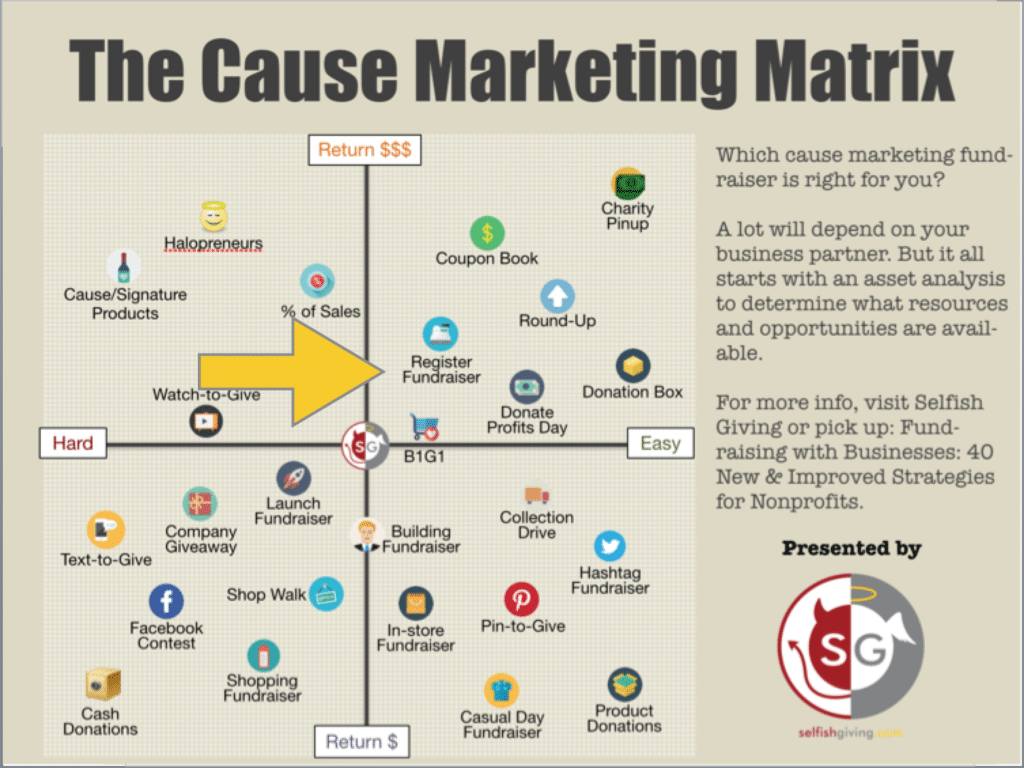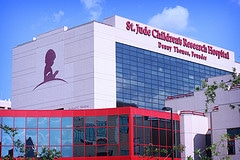 Congratulations… after months and potentially years of hard work you have secured the right corporate or nonprofit partnership for your brand. Agreements are signed and everyone is excited. NOW the truly hard work begins (yes… really) – bringing this great partnership to life.
Congratulations… after months and potentially years of hard work you have secured the right corporate or nonprofit partnership for your brand. Agreements are signed and everyone is excited. NOW the truly hard work begins (yes… really) – bringing this great partnership to life.
Our friend Joe Waters recently developed a cause marketing matrix that plots many types of activation based on level of difficulty and return on investment. As you can see – there are a lot of options and this list seems to grow every year. I like this graphic, and it got me thinking about some of my past experience with bringing cause partnerships to life and other factors you need to consider when determining what success can look like. This month we will take a look at each area of the matrix in a two-part series to help you better evaluate what activation may be right for your partnership.

 Starting with some of the most lucrative activations in the top right quadrant, I’m reminded of the ever-present St. Jude Thanks & Giving campaign. Who hasn’t been touched by this effort? I’ve spent a lot of time supporting and volunteering for charities related to children’s health so this campaign caught my eye in its earliest years. It is the first cause marketing campaign I can remember supporting as a shopper, and it seems to pop up in more stores every holiday season. Last year alone the campaign raised more than $100 million and continues to stand out as best-in-class each year.
Starting with some of the most lucrative activations in the top right quadrant, I’m reminded of the ever-present St. Jude Thanks & Giving campaign. Who hasn’t been touched by this effort? I’ve spent a lot of time supporting and volunteering for charities related to children’s health so this campaign caught my eye in its earliest years. It is the first cause marketing campaign I can remember supporting as a shopper, and it seems to pop up in more stores every holiday season. Last year alone the campaign raised more than $100 million and continues to stand out as best-in-class each year.
WHAT WORKS: We could dedicate an entire blog post here because a lot works, but one particular thing I’m struck by is the organization’s ability to bring corporate competitors together for the same campaign during one of their most competitive times of year. It is a great reminder that nonprofits need to be very thoughtful before granting any level of exclusivity to a corporate partner, and companies shouldn’t always shy away from efforts that already have a lot of corporate support – you could be missing out.
Moving clockwise around the matrix we see a group of activations that can be “easy” to execute, but many not yield as much financial return. However several of these have a strong return in other areas such as in-kind donations and employee engagement. Employees are a key audience for many cause alliances. For Momentum recently developed a toolkit that can help any corporate partner activate employees and achieve this goal on behalf of one of our past clients, SOS Children’s Villages USA. Everything from introductory emails to fundraising and activity tracking tools are included so when a partner requests an employee engagement campaign, they have all the tools ready to go.
![Desks for a Difference[3]](https://formomentum.com/wp-content/uploads/2015/12/Desks-for-a-Difference3.png) WHAT WORKS: Desks for a Difference makes employee fundraising as easy as possible for a corporate partner. The toolkit provides every resource a company might need to engage their employees and the format provides room for companies to customize the fundraiser to what makes sense for their corporate culture – whether it’s a casual day or walk-a-thon. The best thing is now that the work is done, SOS USA can use this evergreen tool for different partners with little effort and minimal planning time.
WHAT WORKS: Desks for a Difference makes employee fundraising as easy as possible for a corporate partner. The toolkit provides every resource a company might need to engage their employees and the format provides room for companies to customize the fundraiser to what makes sense for their corporate culture – whether it’s a casual day or walk-a-thon. The best thing is now that the work is done, SOS USA can use this evergreen tool for different partners with little effort and minimal planning time.
These are two very different fundraising approaches with significantly different tactics, target audiences and results. However, both approaches can be successful. There are a number of ways to build an effective cause activation, and thanks to Joe, we have a great roadmap to help visualize what elements may make sense for any partnership. Later this month, we will look at the last two quadrants that include some of the more challenging activations and additional tips to help you determine how to define and deliver success for your partnership. How has your company or organization brought a partnership to market?
